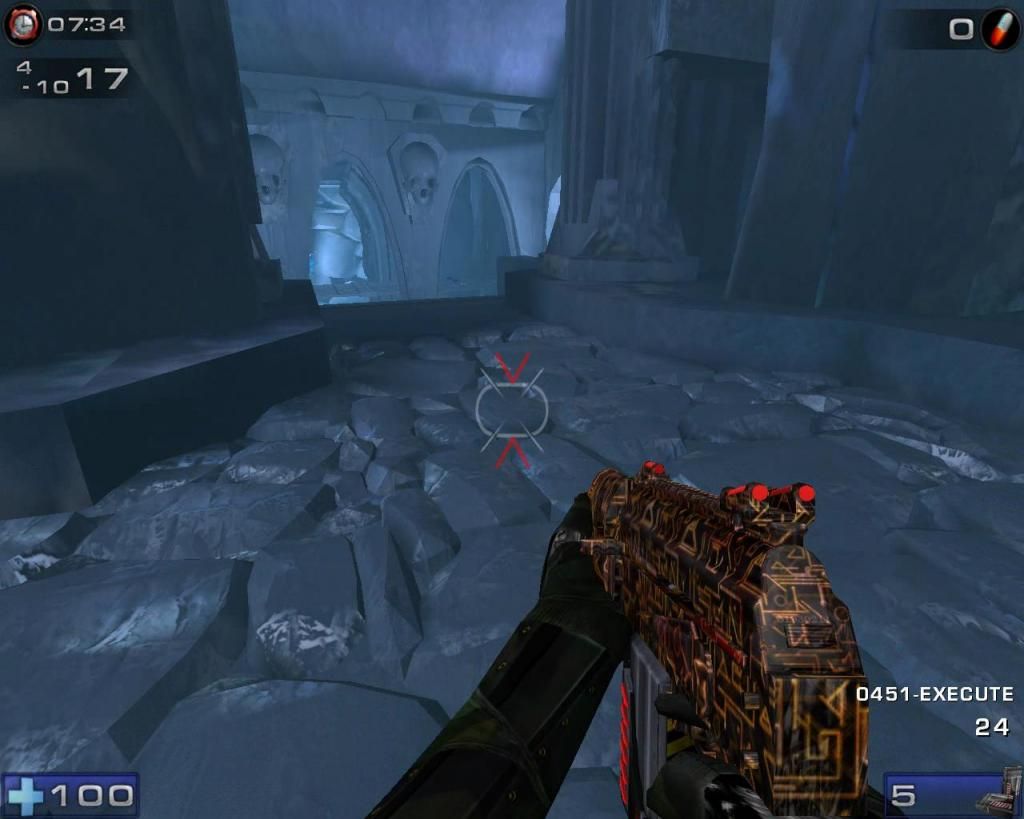Quixel dDo
Posted: Tue 10 Jun , 2014 10:18 am
This thread is for Azarael and Xavious maybe.
Not sure if you know about this awesome time-saver which is basically a Photoshop plugin, but I tried it last weekend and wanted to share my thoughts with you.
First of all, here's a huge tutorial video which explains how does it work and what it is for:
http://youtu.be/hncqbwkGbM4
It was designed to speed up the texturing workflow for the modern game engines with PBR.
I tried it first on my UE4 Pulse Gun model and it turned out pretty good.
However, I was curious if it can be used for creating old-school models for UT2004 without normal maps and todays fancy shaders.
I took Azarael's CX61 model this morning (I hope you won't get mad at me!) baked object-space normal map, ambient occlusion and created some kind of a placeholder for the tangent-space normal map (I loaded UV borders map in Photoshop, added some gaussian blur and converted this to normal map with nVidia PS plugin).
After that I launched dDo, loaded these maps and a painted metal material preset which I created earlier for my Pulse Gun, and this is what I got from scratch in 15 minutes:

Then I loaded the model in Max, applied a material with this new normal map from dDo and baked specularity mask for UT2004 (I've already explained this workflow in the BW changelog discussion thread, it's pretty simple).
I combined it with the dDo specular map, moved it to the alpha channel of the dDo diffuse map and exported the resulting file to UEd.
Here are the UEd viewport screenshots with Rocket's cubemap applied:




If I spent more time and made a material ID map for dDo with metal and plastic parts separated, this would probably look better. However, I think that dDo proves to be quite useful even for a 10-years old engine.
I uploaded the source files here in case you want to take a closer look at this stuff:
https://www.dropbox.com/s/ytt51aomayetti8/cx61.rar
The most awesome thing about dDo is that the legacy version of it is currently free, you can get it on the Quixel site: http://dev.quixel.se/ddo
Not sure if you know about this awesome time-saver which is basically a Photoshop plugin, but I tried it last weekend and wanted to share my thoughts with you.
First of all, here's a huge tutorial video which explains how does it work and what it is for:
http://youtu.be/hncqbwkGbM4
It was designed to speed up the texturing workflow for the modern game engines with PBR.
I tried it first on my UE4 Pulse Gun model and it turned out pretty good.
However, I was curious if it can be used for creating old-school models for UT2004 without normal maps and todays fancy shaders.
I took Azarael's CX61 model this morning (I hope you won't get mad at me!) baked object-space normal map, ambient occlusion and created some kind of a placeholder for the tangent-space normal map (I loaded UV borders map in Photoshop, added some gaussian blur and converted this to normal map with nVidia PS plugin).
After that I launched dDo, loaded these maps and a painted metal material preset which I created earlier for my Pulse Gun, and this is what I got from scratch in 15 minutes:

Then I loaded the model in Max, applied a material with this new normal map from dDo and baked specularity mask for UT2004 (I've already explained this workflow in the BW changelog discussion thread, it's pretty simple).
I combined it with the dDo specular map, moved it to the alpha channel of the dDo diffuse map and exported the resulting file to UEd.
Here are the UEd viewport screenshots with Rocket's cubemap applied:




If I spent more time and made a material ID map for dDo with metal and plastic parts separated, this would probably look better. However, I think that dDo proves to be quite useful even for a 10-years old engine.
I uploaded the source files here in case you want to take a closer look at this stuff:
https://www.dropbox.com/s/ytt51aomayetti8/cx61.rar
The most awesome thing about dDo is that the legacy version of it is currently free, you can get it on the Quixel site: http://dev.quixel.se/ddo

